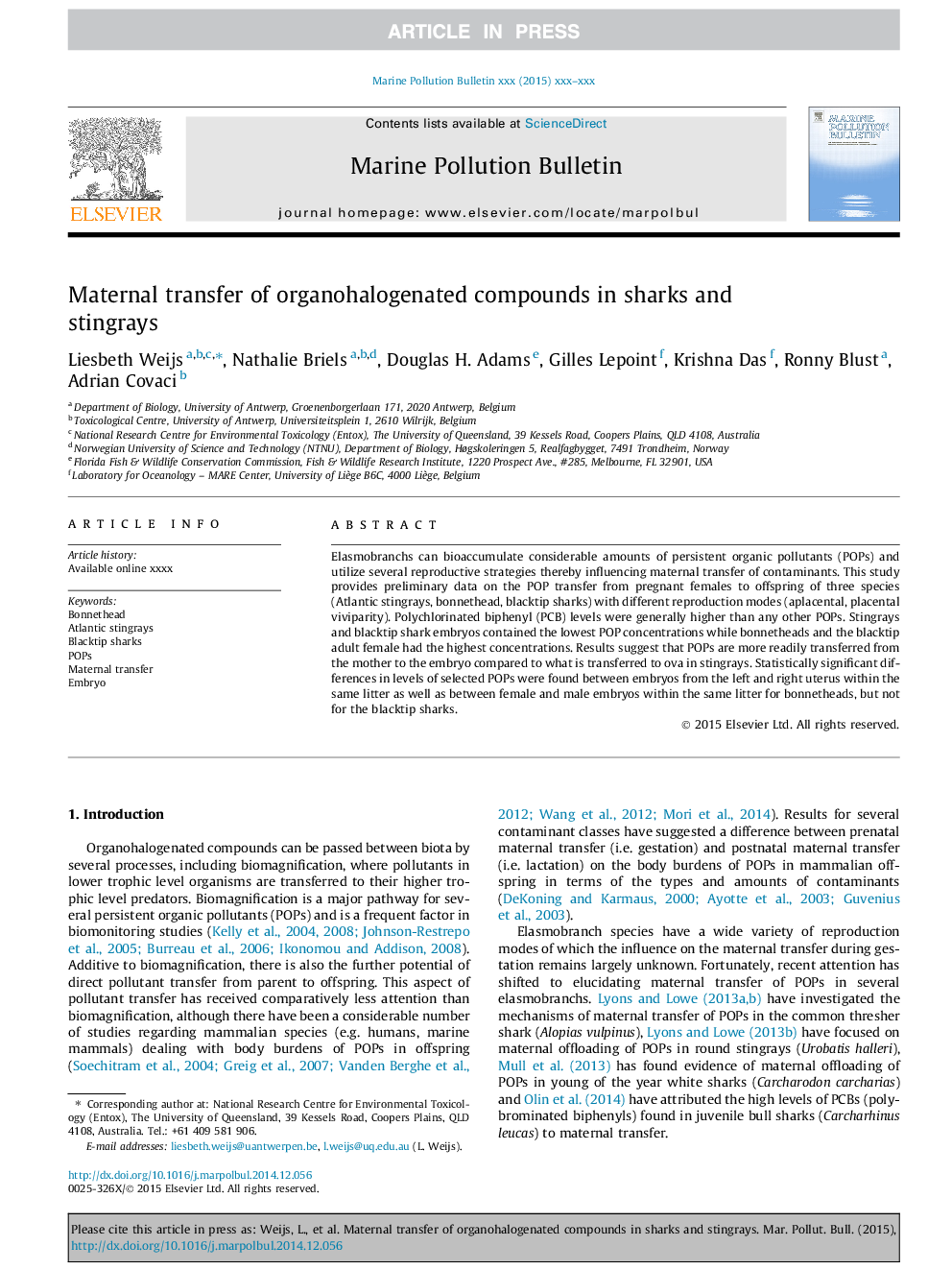| Article ID | Journal | Published Year | Pages | File Type |
|---|---|---|---|---|
| 6357438 | Marine Pollution Bulletin | 2015 | 10 Pages |
Abstract
Elasmobranchs can bioaccumulate considerable amounts of persistent organic pollutants (POPs) and utilize several reproductive strategies thereby influencing maternal transfer of contaminants. This study provides preliminary data on the POP transfer from pregnant females to offspring of three species (Atlantic stingrays, bonnethead, blacktip sharks) with different reproduction modes (aplacental, placental viviparity). Polychlorinated biphenyl (PCB) levels were generally higher than any other POPs. Stingrays and blacktip shark embryos contained the lowest POP concentrations while bonnetheads and the blacktip adult female had the highest concentrations. Results suggest that POPs are more readily transferred from the mother to the embryo compared to what is transferred to ova in stingrays. Statistically significant differences in levels of selected POPs were found between embryos from the left and right uterus within the same litter as well as between female and male embryos within the same litter for bonnetheads, but not for the blacktip sharks.
Keywords
Related Topics
Physical Sciences and Engineering
Earth and Planetary Sciences
Oceanography
Authors
Liesbeth Weijs, Nathalie Briels, Douglas H. Adams, Gilles Lepoint, Krishna Das, Ronny Blust, Adrian Covaci,
